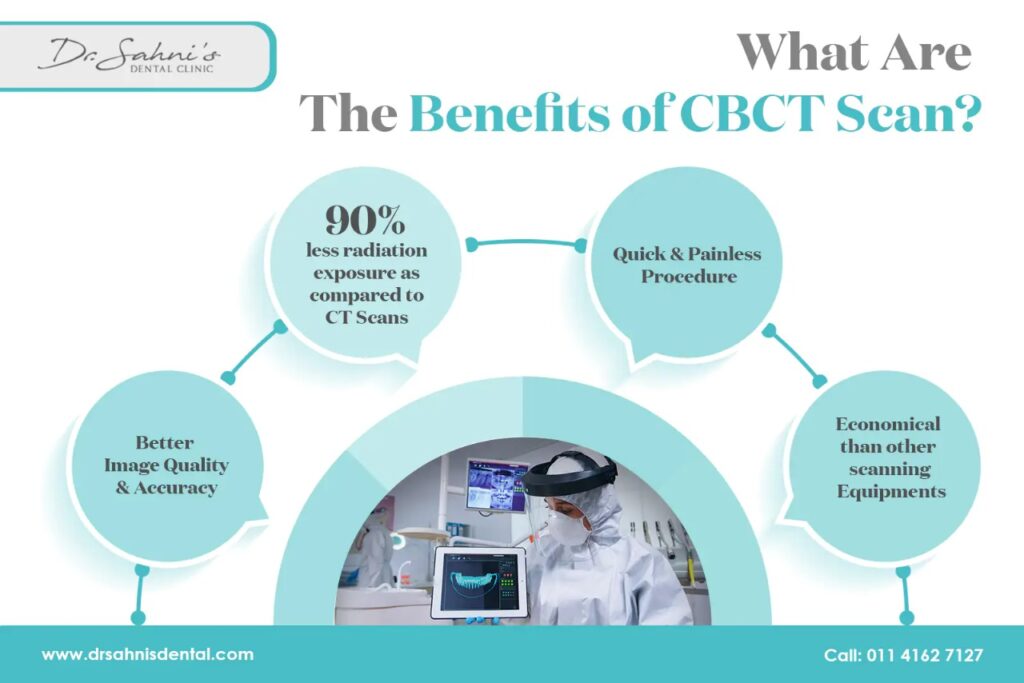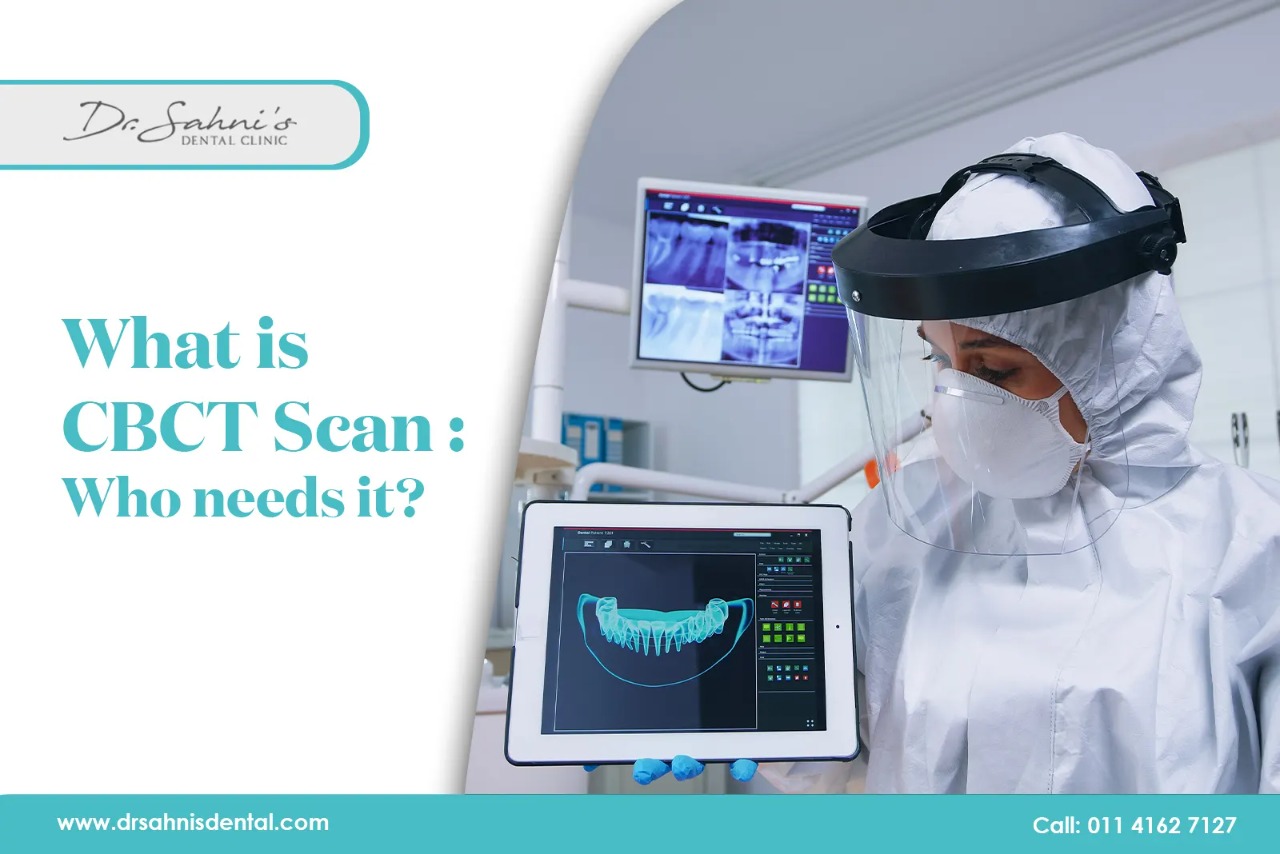Are you wondering What is CBCT Scan? It is an acronym for Cone Beam Computed Tomography. It is a special type of scan that uses various slices of images to give a comprehensive view to the physician without actually having to slice into the target area.
A CBCT scan is like a 3 dimensional X-ray that gives a complete 360-degree view of the target area. Sometimes, a regular X-ray may not provide extensive information about the part to be examined and in such cases, a CBCT scan follows through very well.
In a CBCT scan, a cone-shaped beam is used to direct the radiation precisely to the concerned region and this prevents unnecessary radiation exposure. This is one of the advanced imaging techniques that emerged in the 2000s and is now widely used across various countries and a broad range of specialties.
Table of Content
Feel free to skip ahead if one topic catches your eye:
- What is CBCT Scan?
- Who needs it?
- How is a CBCT Scan Performed?
- Difference between CBCT Scan & X-Ray
- Pros & Cons?
What is CBCT Scan?
It is a type of medical imaging that focuses the radiation on the part that needs to be captured. It then produces an image of the area in the form of slices. This helps the physician to get a good overall view and leads to the right diagnosis.
The technology used in it, is similar to a CAT scan. The main difference is that a CBCT scan provides detailed and accurate results with much less radiation exposure. It is very similar to a CT but a CBCT scan offers more precision when compared to quality.
In a dental CBCT scan, the system uses a cone-shaped X-ray beam that rotates around the patient to capture a three-dimensional image. It is extensively used in dentistry to capture the maxillofacial parts such as the jaw joints, sinuses, nerve pathways, the position of implants, etc.
Who needs it?
You may need it if your dentist or physician suspects any of the following diagnoses:
- Sleep apnoea
- Fractures
- Disorders of the Temporomandibular joint
- Cancers of the bone
- Tumors in the maxillofacial area
- Tooth infections instead of dental canal infection
- Tooth root ingrowth
- To assess any abnormal nasal anatomy
- Determine malformation or infection of the turbinate
- Detect nasal septal deviation and associated problems
- Take appropriate measurements of the jaw such as its dimensions and shape
- Prior to dental implant placement to assure the accuracy of the dental appliance
- To pinpoint the site of existing dental infection
- Used to detect any abnormalities that may result from an impact or accident
- In order to ascertain severe dental decay
- To locate and aid in the removal of an impacted tooth
- As an aid in reconstructive surgery to determine the size and placement
- To detect congenital defects that require surgical correction such as the cleft palate
- Measurements such as bone density, bone width, height, etc are made on-the-dot.

How is a CBCT Scan performed?
- It has numerous applications in dentistry.
- It is a very useful tool in dental and maxillofacial imaging
- It is very useful in dental imaging when a regular dental X-Ray Hairpins is not sufficient for diagnosis
- A cone-shaped X Ray beam moves around the patients head in a dental CBCT scan
- The cone-beam and the area detector move around the patients head and take 360-degree images which are then put together to give a comprehensive wholesome imaging
- The part of the following equipment known as the C arm or the gantry rotates around the head of the patient
- The patient is not required to move from their position
- This equipment takes about 150 to 200 images from various positions as it rotates
- These various images are then compiled to form a single three-dimensional image
- The time taken for a full mouth is well under a minute (30 to 40 seconds)
- Based on what your dentist would like to view, you may need to sit in the examination chair or stand for the dental CBCT scan
- When the area detector and the beam revolves around your head and face, you must remain in your position
- Sometimes you may need to be asked to hold the arm support so that you stay in the same position for accurate imaging
- If you are getting a dental CBCT scan for dental implant placement, then placing a special appliance inside your mouth may be necessary
- Remove jewelry such as earrings, chains, etc during a dental CBCT scan procedure
- Take off any removable dentures or other dental appliances
- Any hair pins or hair accessories may need to be taken off for a dental CBCT scan procedure
- Take off your eyeglasses and hearing aids that you may be wearing
Difference Between CBCT Scan & X-Ray
| CBCT Scan | Traditional X-ray |
| The procedure generates 3D images at various levels | The imaging is two dimensional and gives only a single film |
| The level of radiation exposure is much lower than a standard X-Ray – 400 to 1000 µSv | A standard X-ray has a radiation exposure level of about 3.0 mSv |
| A CBCT scan requires a sitting position for the most part. Sometimes a standing position may be advised | The patient is required to lie or sit on an X-Ray table that is between the Xray machine and the cassette that contains the X-Ray film |
| Three-dimensional images are captured during a dental CBCT scan | Views from the back and the front or side may be taken |
| The patient is not required to move | The patient may need to move according to the view that your physician may have ordered |
| Various 3D images are taken and later compiled into a single image | A single image is generated as per the view of the X-Ray taken |
| A dental CBCT scan is best for visualizing bones, tissues, nerves, and blood vessels | An Xray captures images of dense tissues of the body |
| The CBCT scan is carried out by using a rotating gantry that is attached to a source and an area detector | X-ray radiations are passed through the body.Different parts of the body absorb X-rays in different ways. A detector on the other side picks up and generates images |
| The radiation dose for effective image generation is necessary is very low | A minimum level of exposure is necessary to generate an image this higher than that of a dental CBCT scan |
| The space requirement for a CBCT scan is less | A moderate amount of space is required |
| The time for image acquisition is very less – less than a minute | A few minutes are required to generate an image |
Pros & Cons
There are a few advantages and disadvantages of this scan that need to be considered.
Advantages:
- This scan is a fast imaging technique
- It is a non-invasive procedure that aids in an accurate diagnosis
- The level of radiation exposure during a CBCT scan is very low
- The time required to occupy the exposure area is very less
- Image acquisition takes very little time than most other imaging techniques and is especially useful in dentistry
- The images generated are three dimensional in nature and offer a comprehensive view to the physician
- A dental CBCT scan offers an interactive operative mode such as the multiplanar reconstruction that is highly useful in maxillofacial imaging
- Dental issues such as root resorption are detected early as compared to an X-Ray
- The radiation is about 90% less as compared to an X-Ray
- There is no discomfort of being cramped into a tight place
- The procedure is relatively noiseless and peaceful
- A CBCT scan offers dentists the liberty of guided implant placement
- The exact location of the implant placement can be determined based on the integrity of the jaw bone
- It can be easily blended into routine dental practices
Disadvantages:
- The contrast resolution is very low making it difficult to view deeper tissues
- Image distortion is possible if the patient moves even slightly during the procedure
- Soft tissues cannot be viewed clearly
- It may not be necessary where a 2 D imaging technique would do the job
Takeaway:
Still Wondering What is CBCT Scan? In Dr. Sahni’s Dental Clinic your dental problems will be catered to with great care and expertise. The clinic is equipped with Modern-day technology to carry out all the dental procedures smoothly. A CBCT Scan is available with Dr. Sahni’s dental clinic. Visit us for an appointment and experience world-class dental care.
